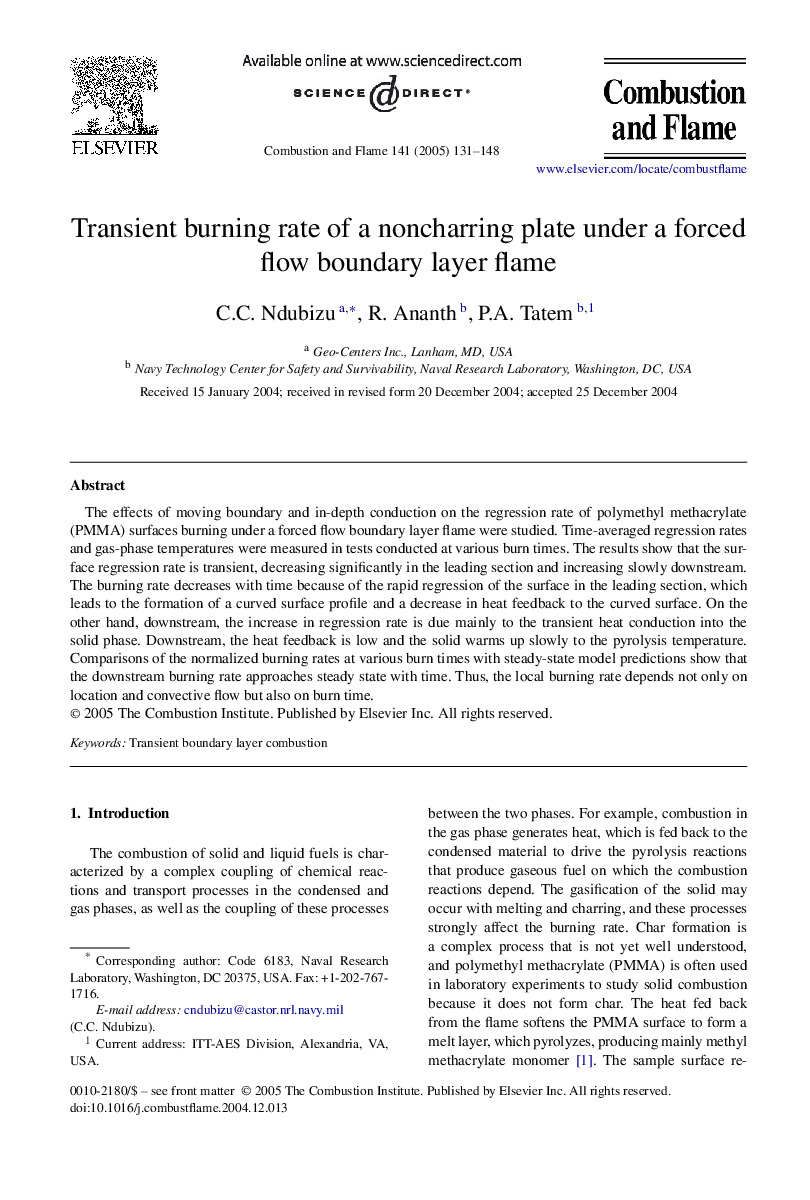| Article ID | Journal | Published Year | Pages | File Type |
|---|---|---|---|---|
| 9624524 | Combustion and Flame | 2005 | 18 Pages |
Abstract
The effects of moving boundary and in-depth conduction on the regression rate of polymethyl methacrylate (PMMA) surfaces burning under a forced flow boundary layer flame were studied. Time-averaged regression rates and gas-phase temperatures were measured in tests conducted at various burn times. The results show that the surface regression rate is transient, decreasing significantly in the leading section and increasing slowly downstream. The burning rate decreases with time because of the rapid regression of the surface in the leading section, which leads to the formation of a curved surface profile and a decrease in heat feedback to the curved surface. On the other hand, downstream, the increase in regression rate is due mainly to the transient heat conduction into the solid phase. Downstream, the heat feedback is low and the solid warms up slowly to the pyrolysis temperature. Comparisons of the normalized burning rates at various burn times with steady-state model predictions show that the downstream burning rate approaches steady state with time. Thus, the local burning rate depends not only on location and convective flow but also on burn time.
Related Topics
Physical Sciences and Engineering
Chemical Engineering
Chemical Engineering (General)
Authors
C.C. Ndubizu, R. Ananth, P.A. Tatem,
